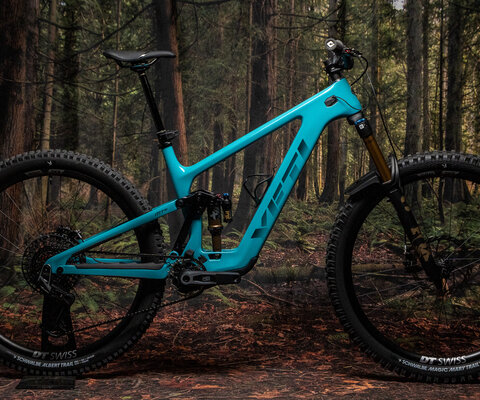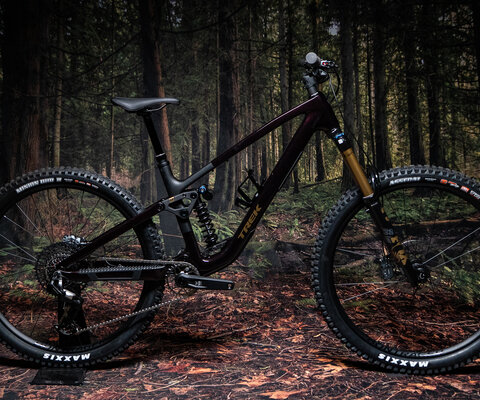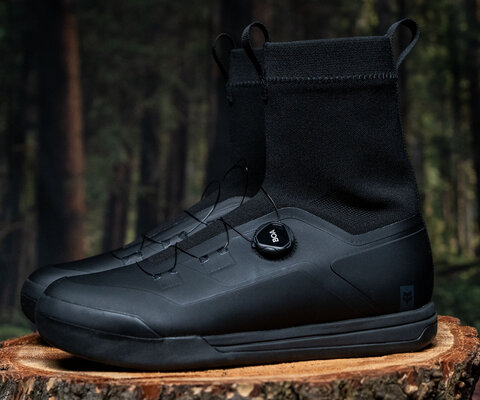CANE CREEK DB INLINE REAR SHOCK REVIEW
Unless you have been living under a rock, up in a tree, or any other place isolated from the interweb, there is more than a good chance that you are aware of Cane Creek’s line of double barrel rear shocks.
The topic has been covered more than once over and there is a general consensus that what Cane Creek has to offer with each version of the Double Barrel concept is not just good, but perhaps revolutionary. The most telling evidence might be the recent product unveilings by the usual suspension suspects which seem to betray a need to push back against the wide acceptance of the DB line by offering similar levels of tuning abilities. In the DB series, the Inline is meant to bring the heavy-hitting performance of the DB Coil and the DB Air to a smaller package intended for machines with less than 150mm of travel. As a rider who likes to dial things into perfection, I have been stoked to have the chance to get to know the Climb switch-equipped DB Inline.

For those who are not in the know, the double barrel technology employed by Cane Creek has origins in Öhlins motorsport dampeners. Basically it allows the independent external tuning of high and low-speed rebound and compression. It accomplishes this by routing fluids in a cyclical manner through an inner and outer chamber within the stanchion shaft. The direction and amount of force exerted on a nitrogen charged diaphragm determines which of the dampening circuits is activated as the shock articulates. The result is a shock that can be tuned to match your bike and tinkered with to yield a wide range of riding characteristics. The DB Inline CS tested here has an additional lever that adds some low-speed compression and rebound dampening intended to assist with climbing. I have been content to know that each of the tuning mechanisms on the shock yields a specific result, and I’ve kept my experience on a superficial trial and error level.
My testing took place aboard a 2014 Intense T275, upon which many miles were logged over the course of about three months. My riding style is probably best described as advancing; I am a solid ascender and descender, however my prowess with airborne activities leaves something to be desired and hucks-to-flat and outright casings are a regular occurrence as I continue to earn my wings. I would like to believe that all of this makes for a pretty honest assessment of a shock.
Out of the box, the DB Inline feels and looks like a serious piece of equipment. It comes with all the tools and materials to get going, including volume spacers, an Allen key, and a very detailed step-by-step setup manual. In addition, Cane Creek has developed an extensive database of setups and a support forum on its website to further assist riders in getting the best from the DB lineup. The idea behind it is all very clear; a no-compromise, user customizable shock. The controls and the air valve can even be repositioned to make them more accessible on the frame.
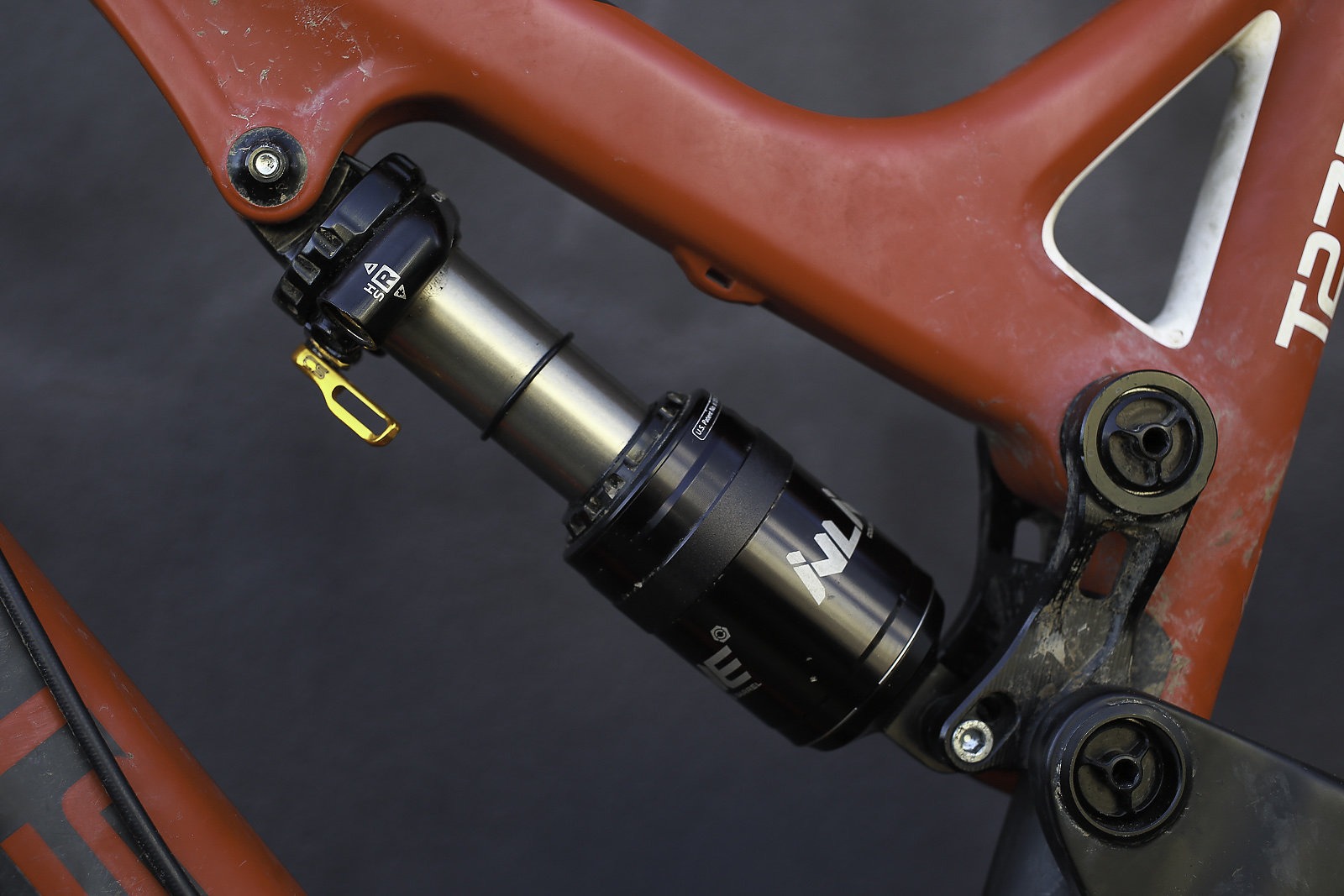
For my application, no volume spacers were recommended so I was able to simply bolt it on, set the sag, dial in the recommended base, tune, and hit the trails. For my bike the recommended settings are intended to compliment the suspension's inherent characteristics. Light low-speed compression dampening maintains the plushness of VPP over small bumps relying on its natural tendency to firm up under power to control bob. A good deal of high-speed compression helped resist harsh bottom-outs, a bit of high-speed rebound kept things lively, and a fair amount of low-speed rebound helps maintain traction while climbing. With these settings my bike immediately felt better than it did with the OEM shock. It became more compliant over small bumps, more poised in its mid travel, and more resistant to big impacts while still using the full travel. On the ups this made for smoother climbing and greater ease in surmounting large obstacles. On the downs my bike tracked and carved like nothing else I have experienced, eating up bumps when necessary and popping over things when asked to. When landing drops and jumps, my bike touched down with a bottomless and controlled feeling.
After getting to know how these settings worked with my bike I decided to stir the waters and see what affect each control would have on the ride. Beginning with the Climb switch, I went through all the adjustments making incremental changes in each direction from the base tune and feeling it out on a small section of well known trail. I can report that each tuning circuit is micro-adjustable, with small inputs yielding proportionate and predictable results on the performance of the shock. The sensitivity of the adjustments was such that after a springtime bearing change, small adjustments were necessary to get back to the desired feel. In the end, I ended up very close to the recommended base tune. The small bump performance became my favorite aspect while testing the DB Inline; especially since dialing back the low-speed compression to achieve this performance presented no compromise to the other aspects of the ride. On the other end of things I dialed a few extra degrees of high-speed compression and rebound to slow things down a bit during big compressions. All adjustments were small and effective, a very satisfying set of characteristics to a tinkerer such as myself.
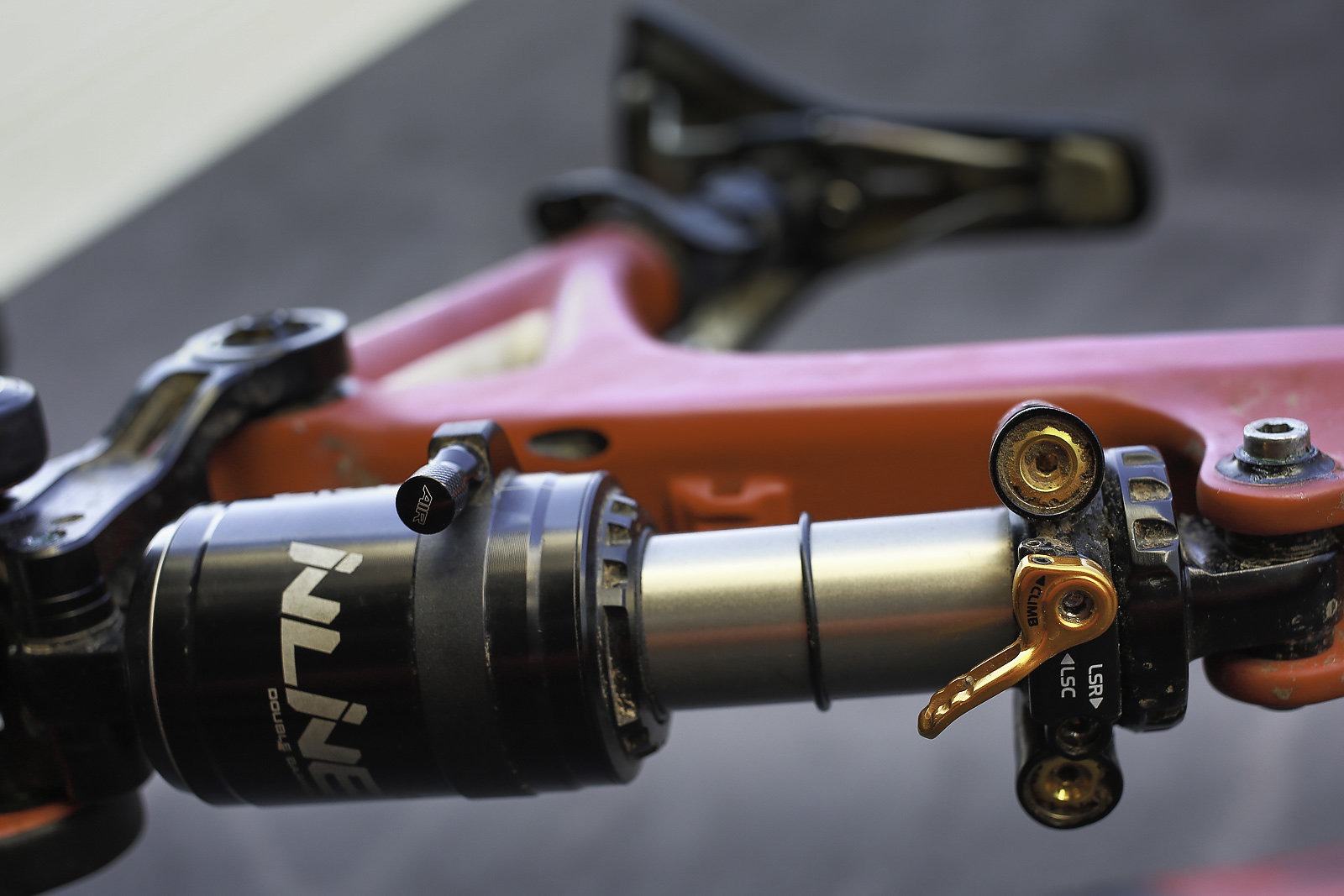
In regards to the Climb switch, it is not an all-or-nothing affair. You can move it a little into its range or all the way and feel its effect. It truly just adds low speed compression and rebound as you engage it. It never becomes a lockout type function and always reverts to the main circuitry when needed. This means that if you are riding along with the Climb switch on and suddenly need to roll into a steep chunder-filled steep for some reason, the shock will open right up and get you down just as it would without the switch engaged. I found that unless climbing on completely polished fire road type assents, only the smallest amount of addition was useful. In fact, as I dialed in my preferences, the Climb switch became entirely unused and I came to rely on the kinematics of the bike to firm things up on climbs. I even ended up backing off on the low-speed compression so as to accentuate the plush rollover capabilities of my bike while climbing. All of this is specific to my bike and riding preferences.
Depending on your bike and your habits, a different set of adjustments will be necessary. That said, if you take the time and follow the guides, any bike (within reason) can be accommodated with the available options. I can see where certain suspension layouts, especially those which typically benefit from some form of pedaling platform, will feel better than they ever have due to the unique way the Climb switch adds support.
I have one last note pertaining to sag, and it is important. If you or your kit changes weight by more than a few pounds then, take the time to get things where they should be. I found that out after finding the sweet spot on a ride. If I decided to do a quick lap with out a pack the next day, then the bike was unwieldy and unfamiliar. A viable solution was simply dropping a few PSI, and the everything else took care of itself.
In regards to product support, I canot say enough good things. With the provided guides and base tunes, setup should not be an issue. If you do run into trouble, the online forum is populated by representatives of the company armed with a plethora of suggestions and solutions for any problems that might arise. Beyond that, the good folks at Cane Creek always answer their phones down in North Carolina and you can speak to a knowledgeable person who will set you straight with a charming southern twang. Given all these resources, it is no stretch to believe that they really want you to be happy with their shock. I am willing to bet that as long as you are within the intended applications of the Inline, you will be quite happy.
It should be clear that I am yet another happy user of the DB. But it is worth mentioning that it did feel as if I was at the upper limits of the shocks capability at some points. The shock never made any unsettling sucking sounds or clunks, but it might like to whisper a reminder that it is really working hard. I think if I was to really get focused on jumping my bike, the DB air, minus the Climb switch, but with the extra volume can, would be a better fit. While the DB Inline was totally solid for my needs, I could see where someone with a heavyweight build or riding style would do better with the burlier options in the DB range. But if you are on a bike in the 120-150mm travel range and ride a wide variety of trail without a heavy focus on downward and airborne activities, the Inline will likely improve your ride in ways you have to experience to appreciate.
